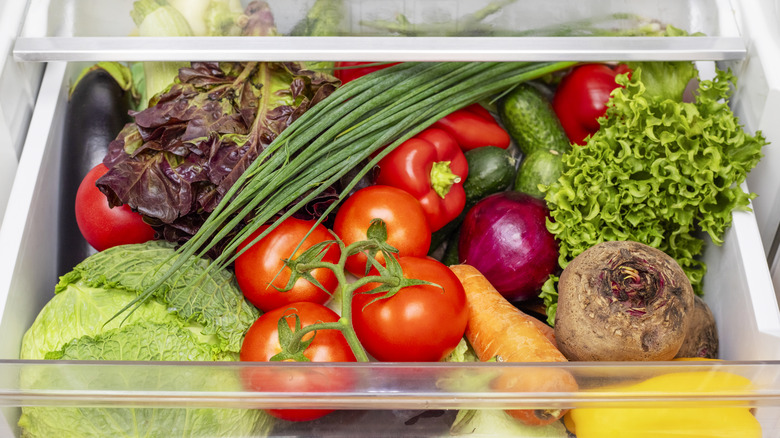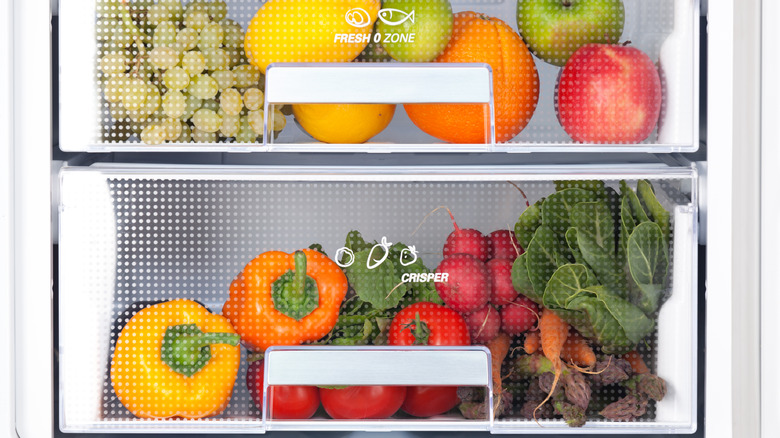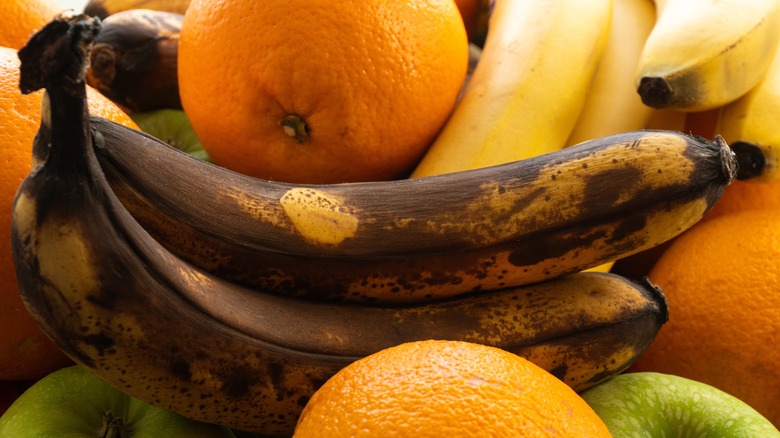The Incorrect Way Everyone Stores Produce In Fridge Drawers
Buying bagfuls of produce from the grocery store or farmer's market can be a big task, but once you come home with your haul, the real work begins. Storing fruits and vegetables so that they stay perfectly fresh isn't always straightforward. From easy-to-bruise bananas, avocados, and apples to wilt-prone lettuce and herbs, it seems like every piece of produce requires a special storage strategy. For items that are best kept cold, the fridge seems like a surefire solution, but there's a common mistake you might be making: using your crisper drawers wrong.
The crisper drawers in your fridge maintain specific humidity levels that are ideal for storing produce, so you can actually eat all your fruits and veggies before they go bad. However, these drawers only provide benefits if you use them correctly. How you organize items in your refrigerator depends on the appliance's available space, specific features of your crisper drawers, and exactly what you're storing.
While it might be tempting to toss all those salad ingredients into the same drawer and be done with it, leaving an assortment of avocados next to a head of leafy lettuce, for example, can cause both items to rot prematurely. From ideal moisture levels to ethylene production, here's what you need to know to keep your fruits and vegetables fresh for as long as possible.
Separate produce into different drawers based on their needs
First and foremost, your fridge may or may not have settings that allow you to adjust its environment. Many modern fridges have at least two crisper drawers, and these drawers often have vents that can be opened and closed to adjust airflow and humidity. This allows you to create one high-humidity drawer with restricted airflow, as well as a low-humidity drawer with regular airflow. If your fridge drawers aren't adjustable, they generally default to a high humidity setting.
Once you know what environment you're working with, you can sort your fruits and veggies based on the conditions in which they thrive. High-humidity drawers are best for vegetables that are thin-skinned and prone to wilting, such as lettuce, broccoli, asparagus, cucumbers, carrots, cauliflower, and herbs. Just be mindful not to overpack your drawers, especially when dealing with leafy greens. It's important that your produce has enough breathing room, and that delicate greens don't end up crushed.
Low-humidity drawers are best for produce that is thicker-skinned and/or prone to rotting and molding. Mushrooms, tomatoes, oranges, pears, peaches, avocados, berries, and apples stay fresh for longer when stored in a drier area with plenty of ventilation. Some of these can also be stored at room temperature. Citrus like oranges are rather hardy, while avocados and apples are also fine to leave out on the counter, unless you want to delay their ripening.
Some produce can slowly rot themselves and others
There's another reason why some fruits and vegetables should be stored separately: ethylene. Ethylene is a gas emitted by some produce that speeds up ripening — and eventually rotting — in items that are sensitive to it. Some fruits both produce this gas and are sensitive to it, like bananas, which is why some supermarkets wrap banana stems in plastic. Tomatoes, cantaloupes, apples, avocados, and stone fruits also both produce and react to ethylene.
It might seem counterintuitive to store ethylene-producing items together, but ventilation makes all the difference. A low-humidity drawer provides enough airflow for ethylene to dissipate. Limited to a single crisper drawer, or ones without adjustable airflow? Use them to store vegetables, keeping ethylene-producing fruits far away or out of the fridge altogether. You might come across a few special cases, though. For instance, celery produces ethylene, but needs high moisture levels to remain crisp. Instead of placing it in a high-humidity drawer, keep celery fresh by wrapping it in aluminum foil. This allows the ethylene to dissipate while preventing wilting.
Every piece of produce is unique, so if your items end up prematurely rotting, do some extra digging into that specific fruit or vegetable. Even different breeds can make a difference, with certain types of apples producing more ethylene than others. Either way, when it comes to maximizing freshness, organizing your fridge drawers correctly is the most effective way to prevent spoilage and save money.


